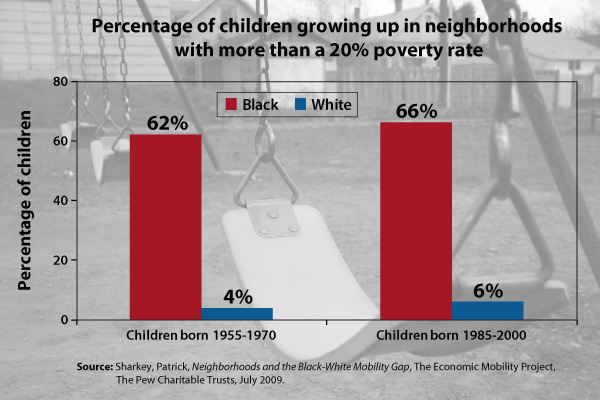By Joydeep Roy
Two out of every three black children born between 1985 and 2000 were raised in neighborhoods with at least a 20 percent poverty rate, compared with just 6 percent of white children, a new report from the Pew Foundation finds. These numbers are virtually unchanged from thirty years ago. Among children born between 1955 and 1970, 62 percent of black children were raised in neighborhoods with at least a 20 percent poverty rate, compared with only 4 percent of white children, according to the Pew report. This gap persists even when the poorest families are excluded from the analysis. Among children from the upper three income quintiles, almost half of black children — 49% — lived in high-poverty neighborhoods, defined as those with at least a 20% poverty rate. Only one percent of white children from the upper three income quintiles lived in high-poverty neighborhoods.

Too many children, particularly those from minority groups, are growing up in poor communities. While most studies of child poverty look at the direct impact on children living in poverty, research also shows that proximity to poverty can limit a child’s job and education prospects, even if that particular child is not poor. With research showing that reducing the concentration of poverty in their neighborhoods significantly affects children’s future, including their prospects in the labor market and their chances of upward mobility, policies that foster such changes should be a top priority.
